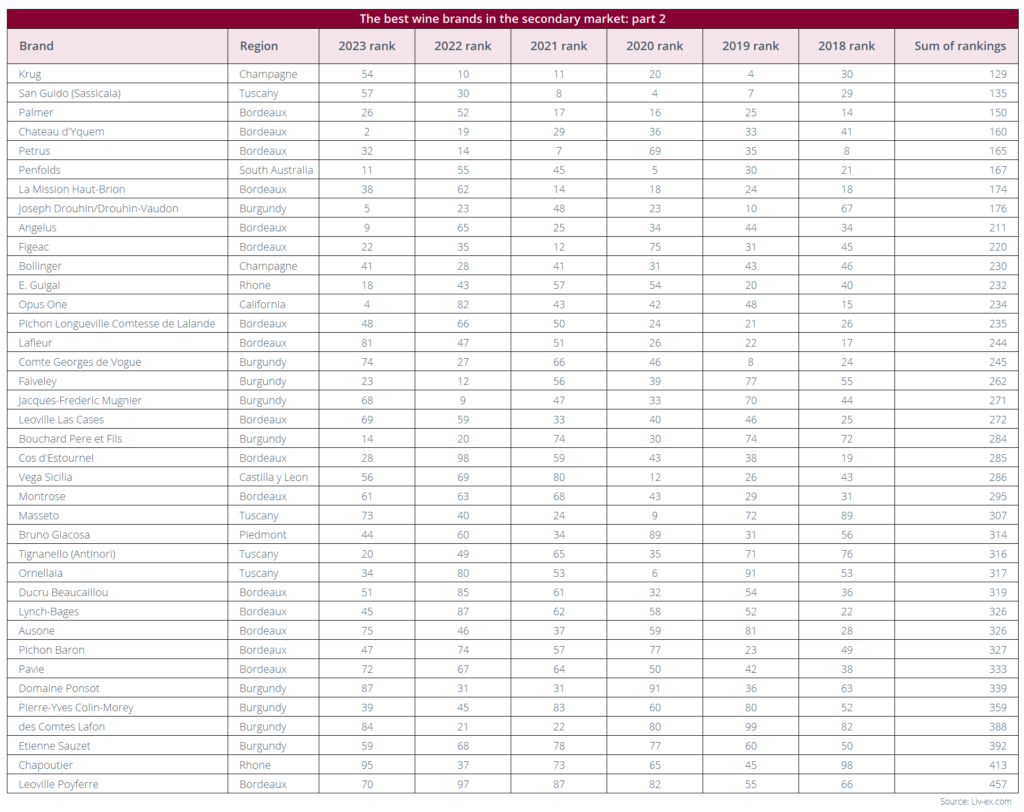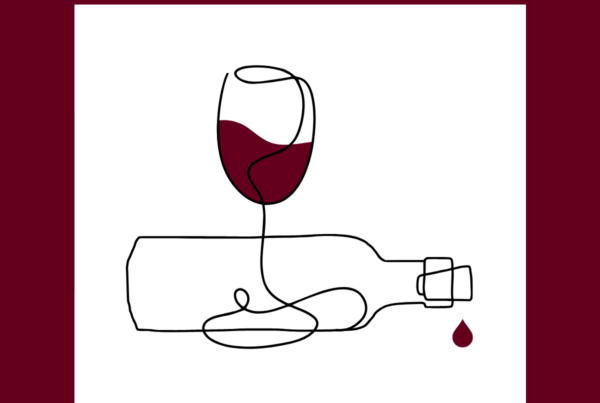What’s happening in the market?
Over the past weekend, Bordeaux maintained its leading position, holding 41.9% of total trade by value. This was largely driven by the active trading of wines from Château Mouton Rothschild and Petrus.
Italy, propelled by trades of wines from Tuscany and Piedmont, secured a 16.3% share of trade. Contributors to this share included wines from Tenuta San Guido, Giuseppe Rinaldi and Ornellaia.
Burgundy accounted for 16.6% of trade from Friday through to Monday. The region was buoyed by wines from Coche-Dury, Domaine du Comte Liger Belair and Domaine Arnoux-Lachaux trading.
Today’s deep-dive: The best wine brands in the secondary market
In the last six years, the Power 100 rankings have seen 174 brands secure positions in the top 100.
51 of these have maintained their presence year after year; 23 from Bordeaux, 13 from Burgundy, five from Tuscany, four from Champagne, two from the Rhône and one each from California, Castilla y Leon, Piedmont and South Australia.
Only two brands, Domaine Leroy and Château Mouton Rothschild, have achieved the feat of remaining in the top 20 consistently over the last six years. In fact, Leroy was the number one brand for four out of the six years.
A group of 13 brands, predominantly Bordeaux-based, have consistently secured spots in the top 50. These were Château d’Yquem, Château Cheval Blanc, Château Haut-Brion, Château Lafite Rothschild, Château Latour and Château Margaux, along with Domaine Leflaive from Burgundy, Bollinger, Louis Roederer and Dom Pérignon from Champagne and Gaja from Tuscany.
The best wine brands in the secondary market: The longlist
In the long list of brands having secured a spot in the last six editions of the Power 100, there is more diversity, although Bordeaux and Burgundy still dominate the rankings.
Penfolds from Australia, Opus One from California and Spain’s Vega Sicilia make the list, as do Chapoutier and E. Guigal from the Rhône. Tuscany stands out with four brands, the ‘Super Tuscans’ Sassicaia, Masseto, Tignanello and Ornellaia. Bruno Giacosa from Piedmont can also be found on the list, having reached a record ranking of 31 back in the 2019 edition of the Power 100.
The best wine brands in the secondary market: Honourable mentions
Dominus, Georges Roumier, Pol Roger, Château Pontet Canet and Salon narrowly missed out on making the list for the sixth year in a row, falling short in the 2023 rankings. Dominus came closest to inclusion, securing the 102nd position in 2023. The brand fell out of the 2023 Power 100 due to a decline in both trading volume and value. Additionally, Dominus’ average trade price saw a decrease, contributing to its drop in the rankings.
Pol Roger was the second-closest contender, coming in 112th in 2023. The brand missed out on a place in the 2023 rankings due to a decline in trade volume and a negative score in its Market Price performance.
What consistent inclusion in the Power 100 means
To qualify for this inclusion in the Power 100, brands must have traded at least three wines or vintages during the designated period, with a total trade value exceeding £10,000 every year. Their final ranking is measured by a combination of year-on-year price performance, trading activity on Liv-ex (both by value and volume) and the average trade price for their wines. In essence, these brands have demonstrated resilience, navigating the market’s fluctuations with enduring success and coming out on top year after year. As such, they can be considered the ‘best’ or most powerful brands in the secondary market.
*2018 was the first year Burgundy labels with both maisons and domaines were combined as one.
In case you missed it
Here’s what we’ve been reading:
- Liv-ex: New Tool: Technical Analysis
- the drinks business: ‘Excesses’ of recent fine wine gains have dissipated as market corrects
- IG bank: 7 Unique Investment Assets to Beat Inflation: what are they?
Liv-ex analysis is drawn from the world’s most comprehensive database of fine wine prices. The data reflects the real time activity of Liv-ex’s 620+ merchant members from across the globe. Together they represent the largest pool of liquidity in the world – currently £100m of bids and offers across 20,000 wines.






